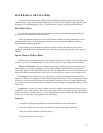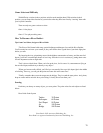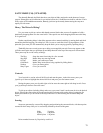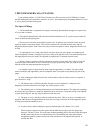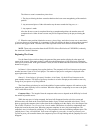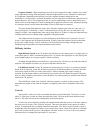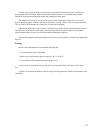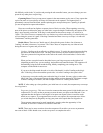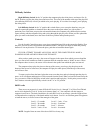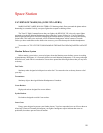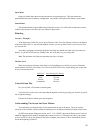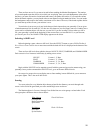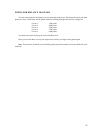VIDEO CHESS(TM) (1 PLAYER)
It’s your 22nd move of the game. Your defense is set with a tight King positioning. You move in your
Queen and capture the opponent’s Rook – his only defense – “checkmate.”
Sharpen your wits and get ready to become a “master” with Video Chess(TM). It’s you against the
computer in one of the most sophisticated approaches to the classical thinking man’s game.
Checkmate!
As one of man's oldest war games, chess is believed to have originated in India between 350 to 400
AD. The first written record of the game was in 700 AD. There are many variations of chess played
throughout the world.
In any chess game, the object is to capture the opponent's king.
The computer sets up the pieces on the board in their proper order. Each player begins with 16 pieces:
one king/one queen/two rooks/two bishops/two knights/eight pawns. Each piece has a distinctive move
which is particular to itself.
King: Your most important piece for surviving the game. The king is not very mobile since he may
only move one square at a time. He may however, move in any direction; on the rank (sideward), on the file
(forward or backward), or diagonally. All other pieces should be sacrificed when necessary, to save the
king. The computer will not allow the king to move to a square which is under attack by an enemy piece.
Queen: The queen is the most mobile and versatile piece on the board, and therefore the most
powerful. She moves in any direction (on the rank, on the file, or diagonally), as many open squares as
desired. The queen combines the powers of the rook and bishop.
Rook: The rook moves on the rank or file (forward, backward, sideward) as many open squares as
desired. The rook is usually considered next in importance to the king and queen.
Bishop: The bishop moves back and forth in a diagonal line, and may be moved any number of open
squares. The two bishops on each side are set up so that one is tied to the light blue squares and one is tied
to the dark blue squares throughout the game. A bishop is considered slightly more important than a knight,
depending on the it's board position.
Knight: The knight moves not on a line but from point to point, following the "one up and two across"
or "two up and one across" pattern shown in the diagram. The knight is unique in that it can not be blocked,
but can jump over other pieces provided it's destination is an open square, or one in which it can take and
capture an opponent's piece.
Pawn: The pawn moves straight ahead one square at a time, and cannot move backward. Only on it's
initial move can the pawn advance two squares, if desired. The pawn may capture opponent pieces by
taking them on a diagonal move, which is the only time the pawn may move diagonally. (With one
exception, see DOUBLE MOVES - "en passant.") Although the pawn is sometimes considered the least
important piece, it is the "foot soldier" of chess and can be vital in holding territory.
Pawn Promotion: If you advance a pawn safely to the last or eighth square (eighth rank) on the
opposite side of the board, it may be "promoted" to any other piece except a king. The computer will
automatically promote your pawn to a queen since it is the most powerful piece. However, by putting the
84




